Overview
-
Wallow
This work was originally designed with no sound and was 19 minutes long, but Eiko added the sound of sea waves. Videographed in November 1983 at Point Reyes National Seashore in California, a natural habitat for seals, in collaboration with Peter Yaple of Video/USA. Originally conceived as a video version of Eiko & Koma's 1977 stage work 'Fur Seal'. The movement was redesigned on location. Edited March 1984 in collaboration with Jeff Bush, ARC Videodance, New York. Made possible with funds from the National Endowment for the Arts. 1984, Eiko & Koma. 19 minutes, silent color video.
- Eiko & Koma's dance film series 'dance for camera'
-The program notes for the stage piece in 1977 contained excerpts from Japanese poet Mitsuharu Kaneko's poem 'Fur Seal’.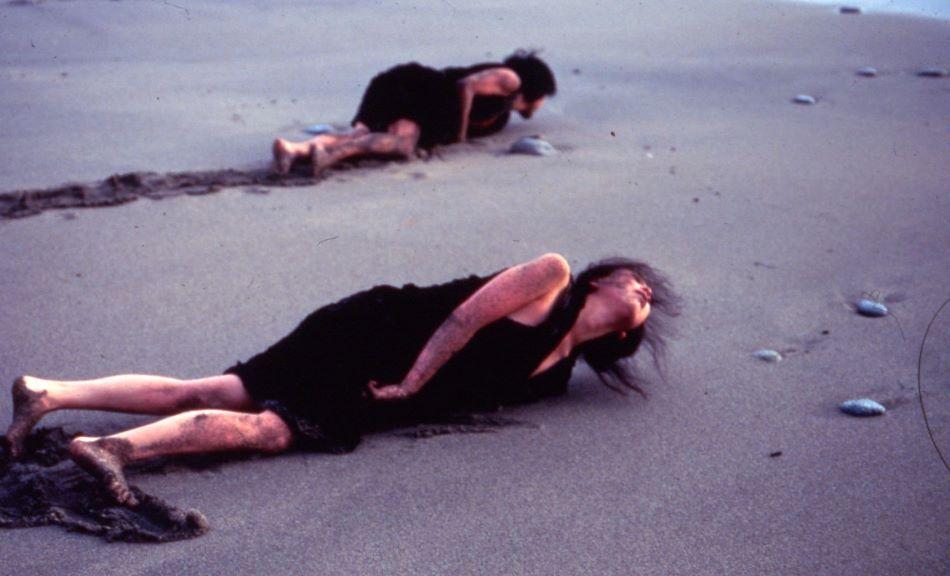
- Performer(s)
- Eiko & Koma
- Director/Choreographer
- Eiko & Koma
- Venue
- Recorded at Point Reyes National Seashore
- Year performed
- 1984
-
Villi Vesi (The Wild Water)
Commissioned work for the Helsinki City Theatre Dance Company, for whom Anzu Furukawa also choreographed "The Rite of Spring" in 1994 and "KEPPI" in 1995. This work is inspired by Furukawa's various experiences with water, such as seeing the different colours of the Amazon River flowing without mixing, the image of women in Africa collecting morning dew in jars, and the frozen sea off the coast of Helsinki.
Act One: I. A Bored Man / II. Birth of a Heart / III. Listen to the sound of clapping with both hands, then what should be the sound of one hand? / IV. The Legend of Water
Act Two: I. Tabula Rasa / II. Fratres for 12 cellos / III. Cantus in memory of Benjamin Britten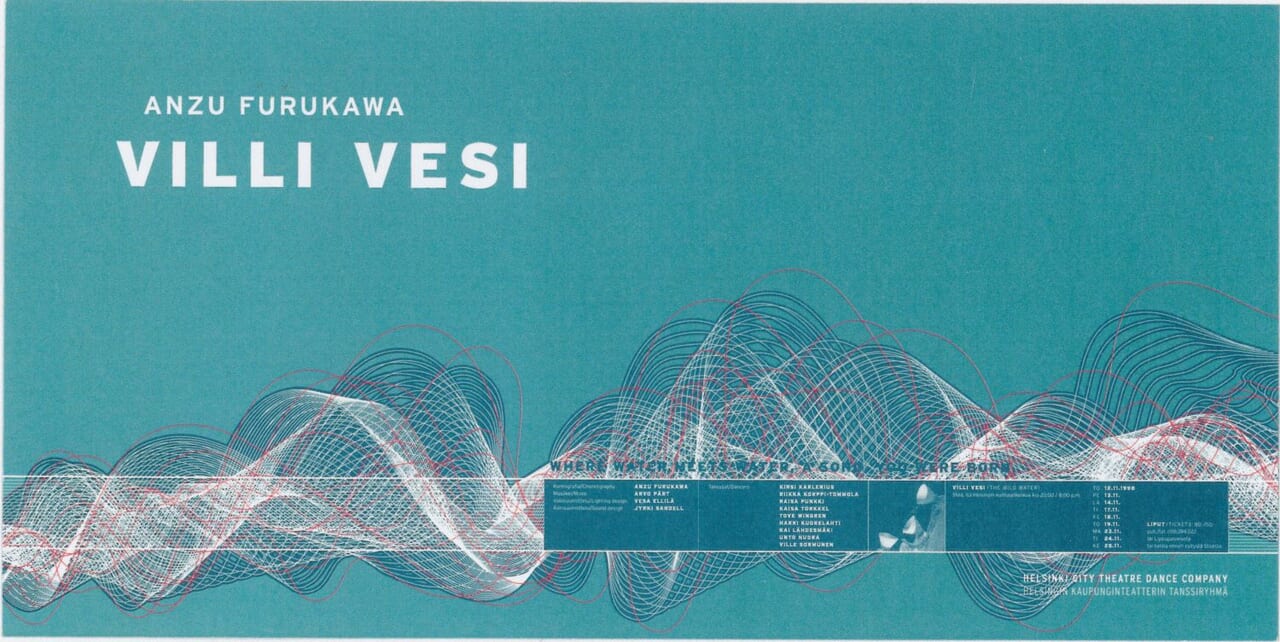
- Performer(s)
- Anzu Furukawa
- Director/Choreographer
- Anzu Furukawa
- Venue
- Storehouse
- Year performed
- 1998
-
Vier Tänze [Four DANCES]
Anzu Furukawa dances in the garden of the Akademie der Künste in Berlin after participating in the first European butoh festival 'Die Rebellion des Koerpers' in 1986. The text, narrated in German by Miriam Goldschmidt at the beginning of the video, is an extract from the 1985 lecture by Tatsumi Hijikata "Suijakutai no saishu" [Collection of the Emaciated Body]. The dances, which start in a pond, are named "MARY CAKEWALK", "FOR A.X." and "Last Tango in Berlin".
German title: 4 Tänze in der Akademie der Künste Berlin von Anzu Furukawa![Vier Tänze [Four DANCES]](https://video.dance-archive.net/en/wp-content/uploads/2025/01/s_anzu_vier.jpg)
- Performer(s)
- Anzu Furukawa
- Director/Choreographer
- Anzu Furukawa
- Venue
- Berlin Academy of Arts
- Year performed
- 1986
-
A Vessel of Ruins
Premiered in Tokyo in December 2010. This work presents a stark portrayal of the human condition, severed from the past and adrift in the vague wilderness of modernity. The dance, which evokes destruction and catastrophe, has also been interpreted as a foretelling of the earthquake and nuclear disaster that occurred a few months later. The piece has been performed across Europe, the US, Russia, Ukraine, Israel, Mexico, and Indonesia, where its cynical worldview has left a profound impact.
-Kudo Taketeru Solo Butoh Performance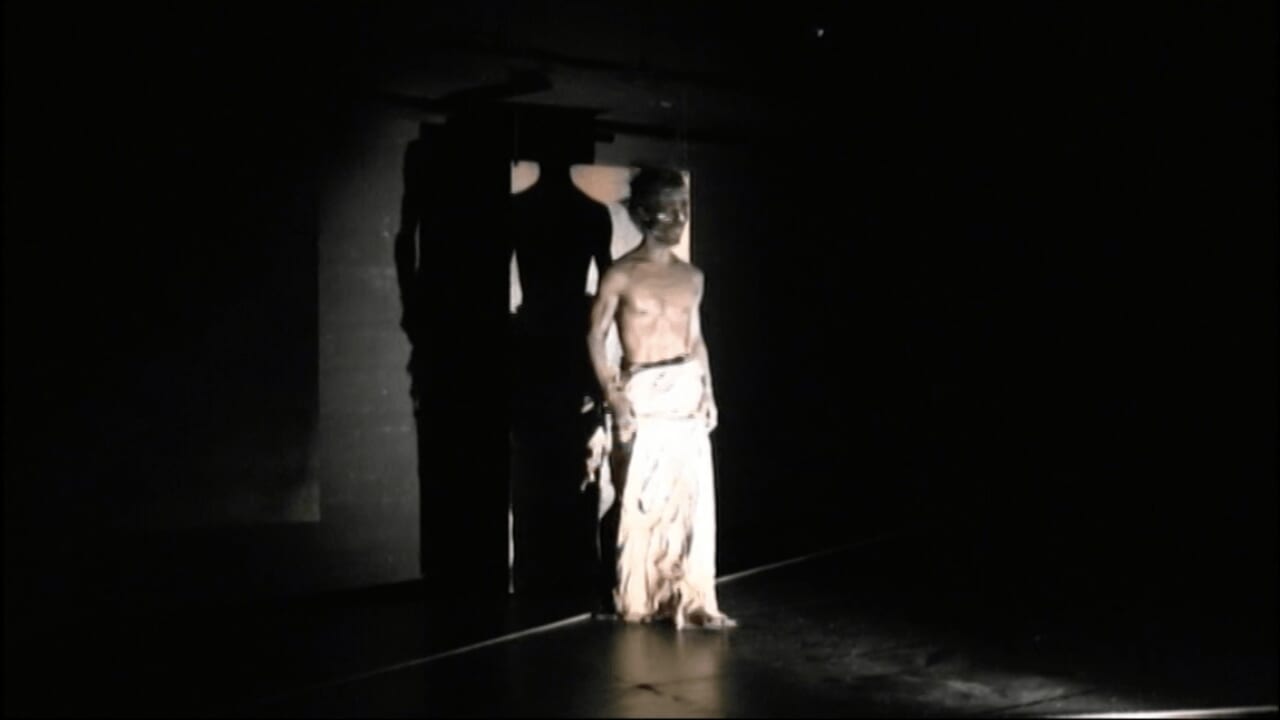
- Performer(s)
- Taketeru Kudo
- Director/Choreographer
- Taketeru Kudo
- Venue
- Space Zatsuyu
- Year performed
- 2010
-
Verwandlungsamt
Anzu Furukawa moved to Berlin in 1991, and taught at the Braunschweig University of Art until 1996. Based on Kafka's "The Metamorphosis", this work is a compilation of works Furukawa created for her students. The title "Verwandlungsamt" is derived from the original German title of Kafka's book "Die Verwandlung" and the word "Amt", meaning administrative office, management bureau or government office.
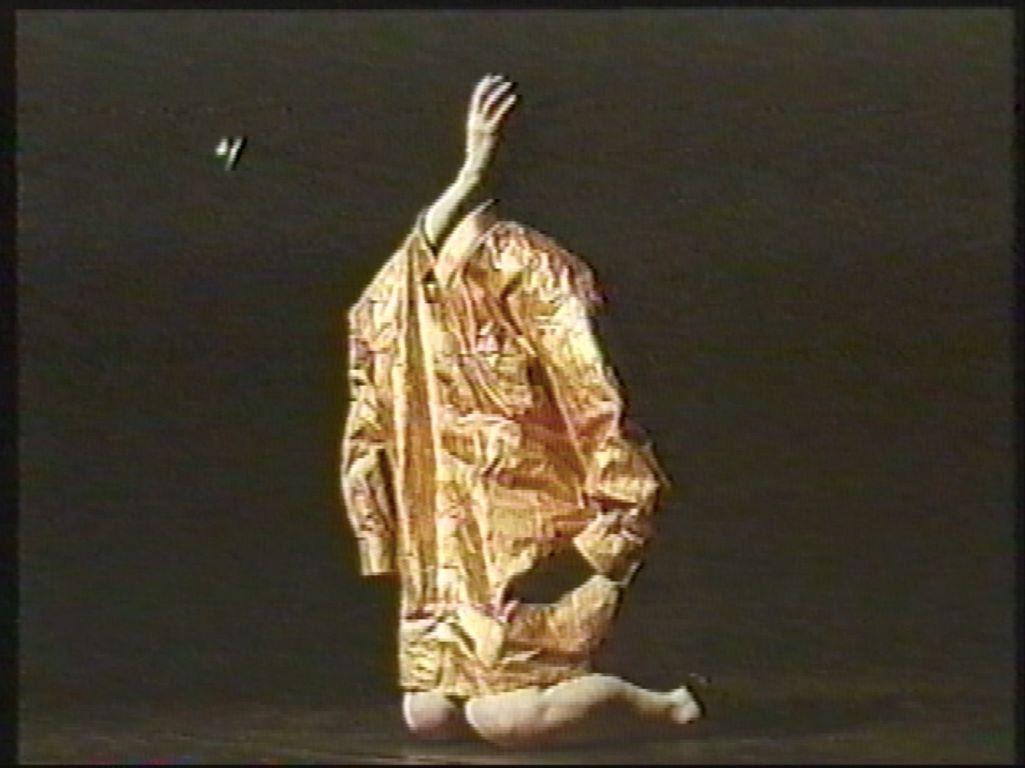
- Performer(s)
- Anzu Furukawa
- Director/Choreographer
- Anzu Furukawa
- Venue
- HBK Braunschweig
- Year performed
- 1993
-
VANISH
Bodies vanish. Dance may vanish, yet still remain. A trilogy of creation confronting its origins, performed in the theatre where it was born.
An endless search for the body, a necessary deviation to redefine dance.
To the roots, and to the poetry that lies beyond.
1. Traces Left Behind
2. Vanish
3. With the Landscape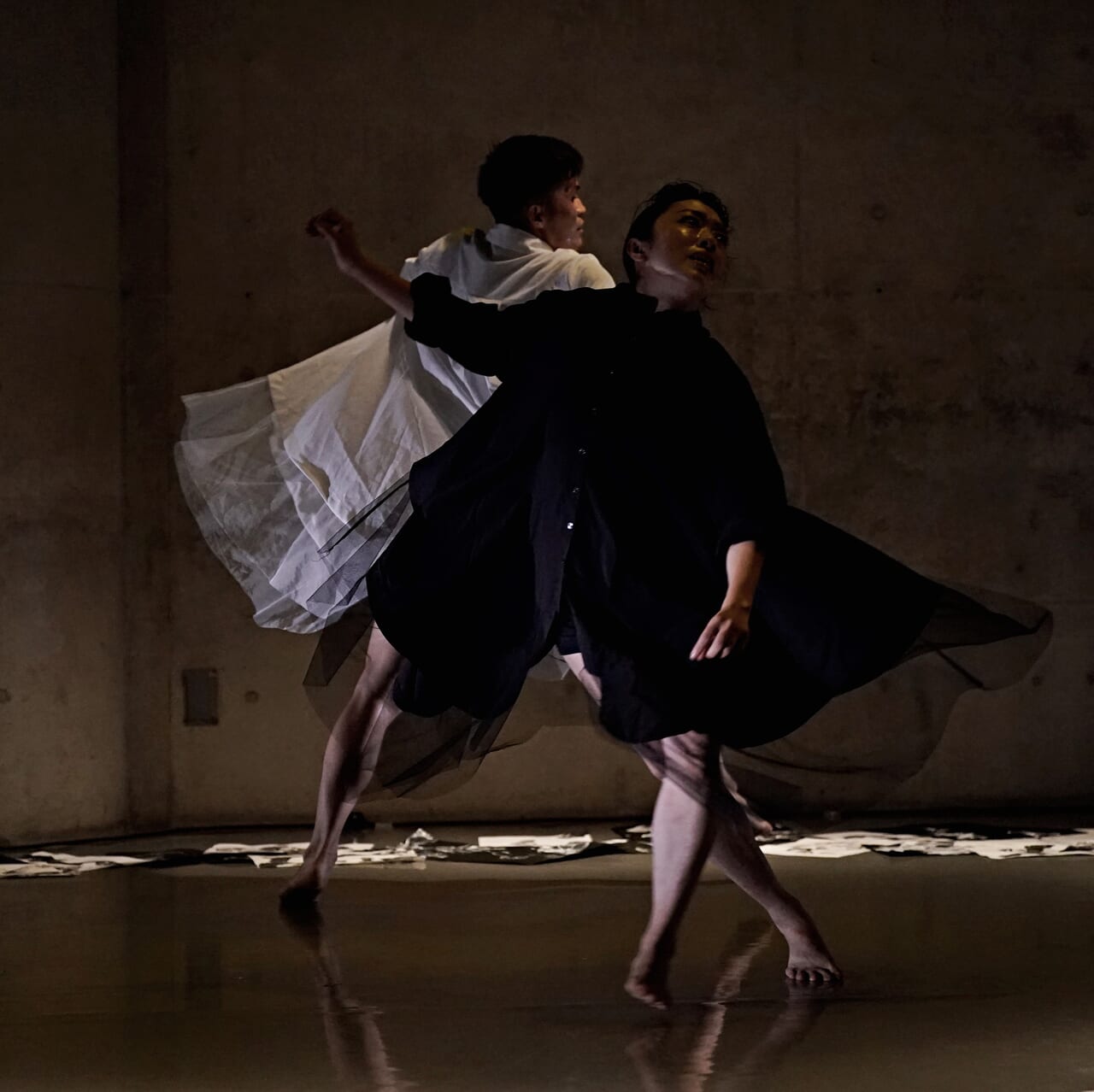
- Performer(s)
- YUKIO SUZUKI Projects
- Director/Choreographer
- Yukio Suzuki
- Venue
- SESSION HOUSE
- Year performed
- 2024
-
UTSUBO-BUNE
Part of the 'Dance ga Mitai! 14: The Collapsing Body' project. A duet between a man and a woman, swaying between the shore of the living and the shore of the dead. Due to the Ebisu Torii's sudden passing in 2013, this became the final duo piece between Torii and Mutsuko Tanaka.
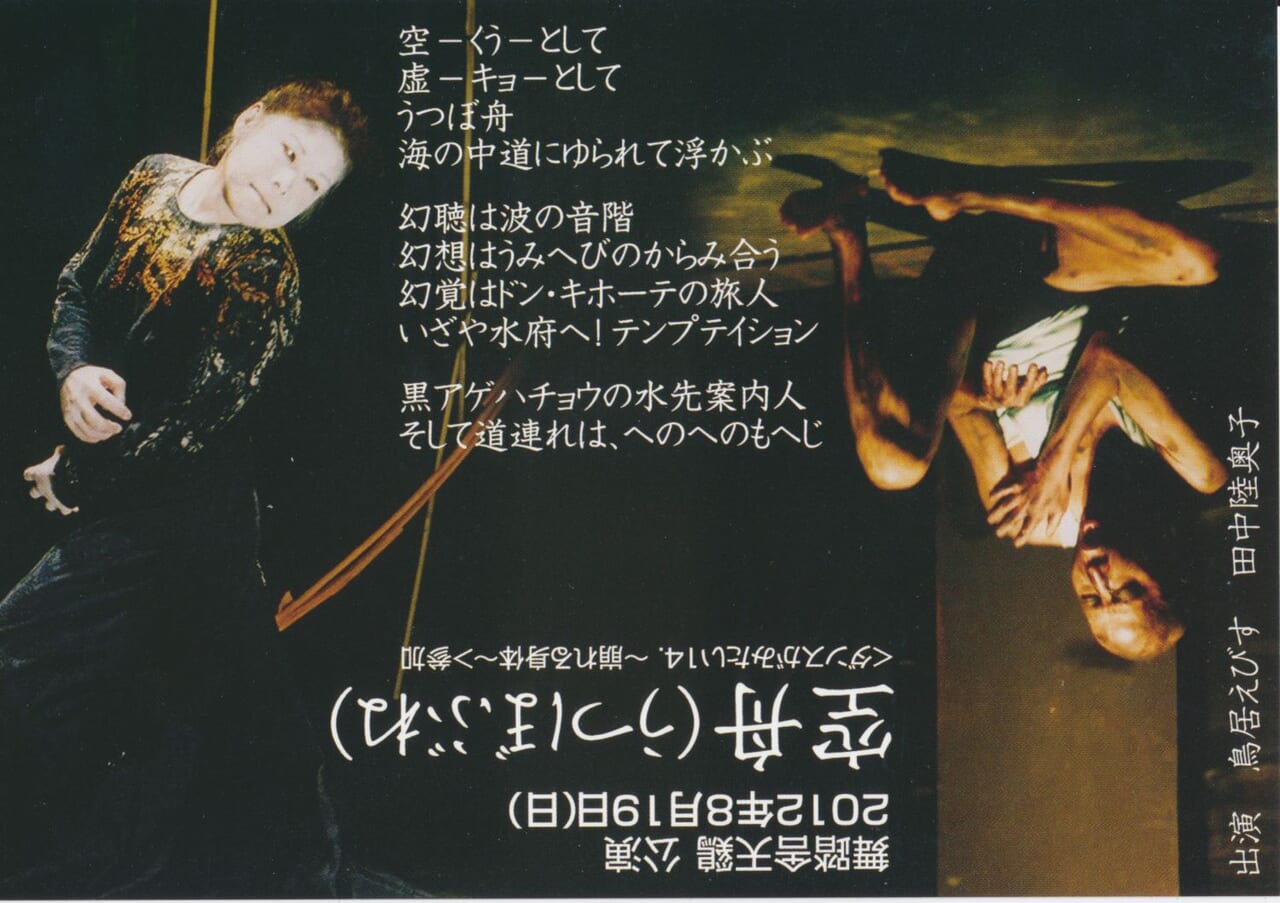
- Director/Choreographer
- Ebisu Torii
- Venue
- d-soko Theater
- Year performed
- 2012
-
unspelled
order of language spilling
spelled and un-spelled voice, spine, fingernails, shadow
broken a part and puzzled landscape in body
breathing the air between
observer, past and I and spelling
A solo dance performance confronting the body landscape, before its configurations of language or orientation. Deconstruction and Regeneration of being, territory of emotion, sexuality, and geometrical weight. Chorea, to oscillate Trash and Flesh, Rhythmically piling up dust of memories.
Cut out moments of Silence.
Premiered at the NY Butoh Festival in 2009.
This piece was also performed at the Rome Butoh Festival, the Barcelona Butoh Festival, the Festival "Big in Japan" in Australia, the NyamaNyama Art Festival in Burkina Faso and more.
Music: Collen, Sarah Peebles, Swinemünder Bridge, John Cage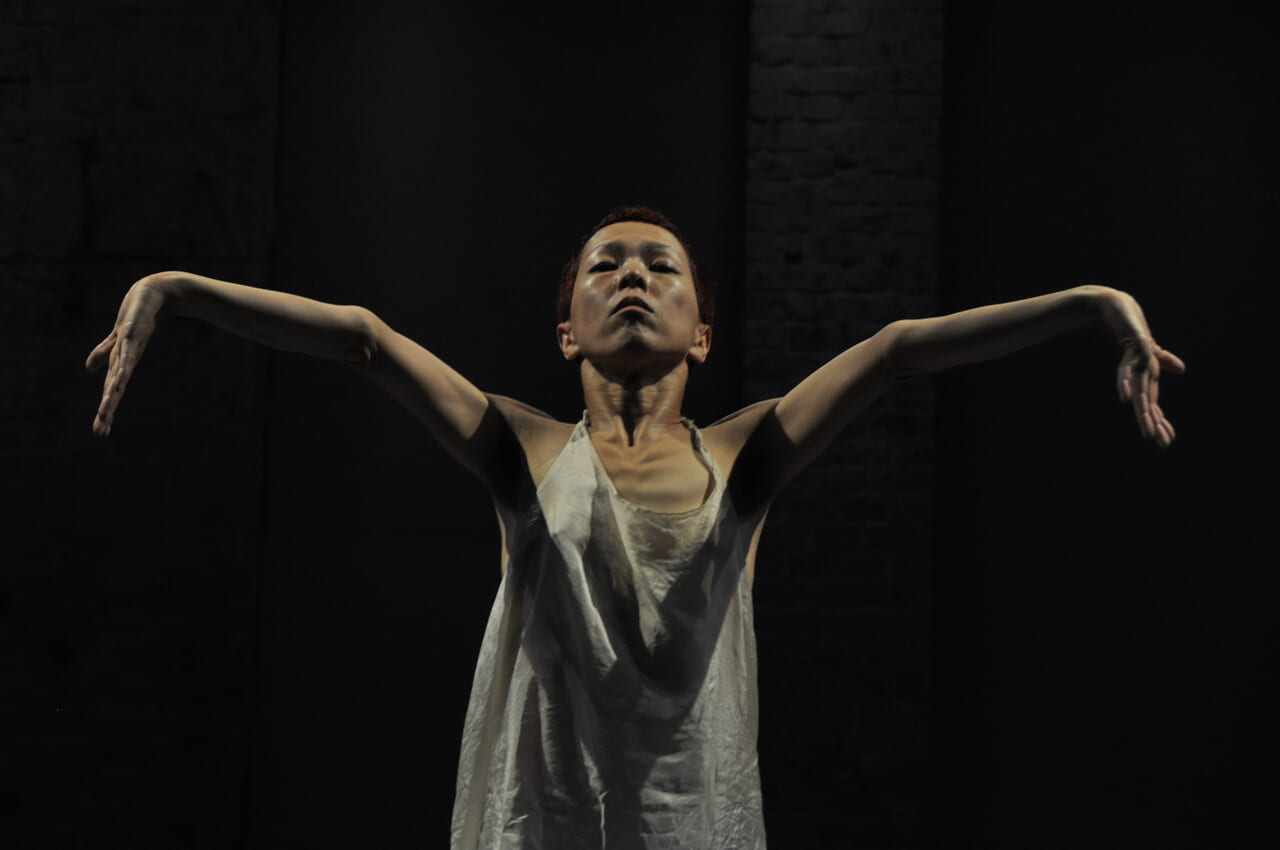
- Performer(s)
- Company cokaseki
- Director/Choreographer
- Yuko Kaseki
- Venue
- DOCK11
- Year performed
- 2012
-
TWO
TWO is the story of two Japanese butoh dancers who chanced to meet in Berlin in 1987, and would soon start the first German-Japanese Butoh company “Tatoeba - Théâtre Danse Grotesque”. In the middle of the 90’s the group fell apart and the artists went their separate ways.
After more than 20 years, Wolfgang A. Piontek brought them together again. He initiated and directed a project with the aim of evoking very private memories, as well as reflecting on the encounter of two cultures, the Japanese and the European.
TWO is even more important in a society that only worships youth - as the two dancers are now advanced in age. Two women who are still dancing, with a lot more to tell about life and dance than the young ones.
After all, dance is not about the speed, techniques and distortions, but about the crystallization of existential and spiritual depth and intensity through physical work.
Piontek is especially interested in the wisdom of the body, how our experiences have been shaped and how we find our expression through the body. In the end, TWO is not a story at all, but a piece of dance theater, creating strong images representing a whole life. Partly grotesque, partly humorous, partly melancholic, partly crazy, and framed by impressive videos by Volker Schreiner which add an extra dimension to what is happening on stage.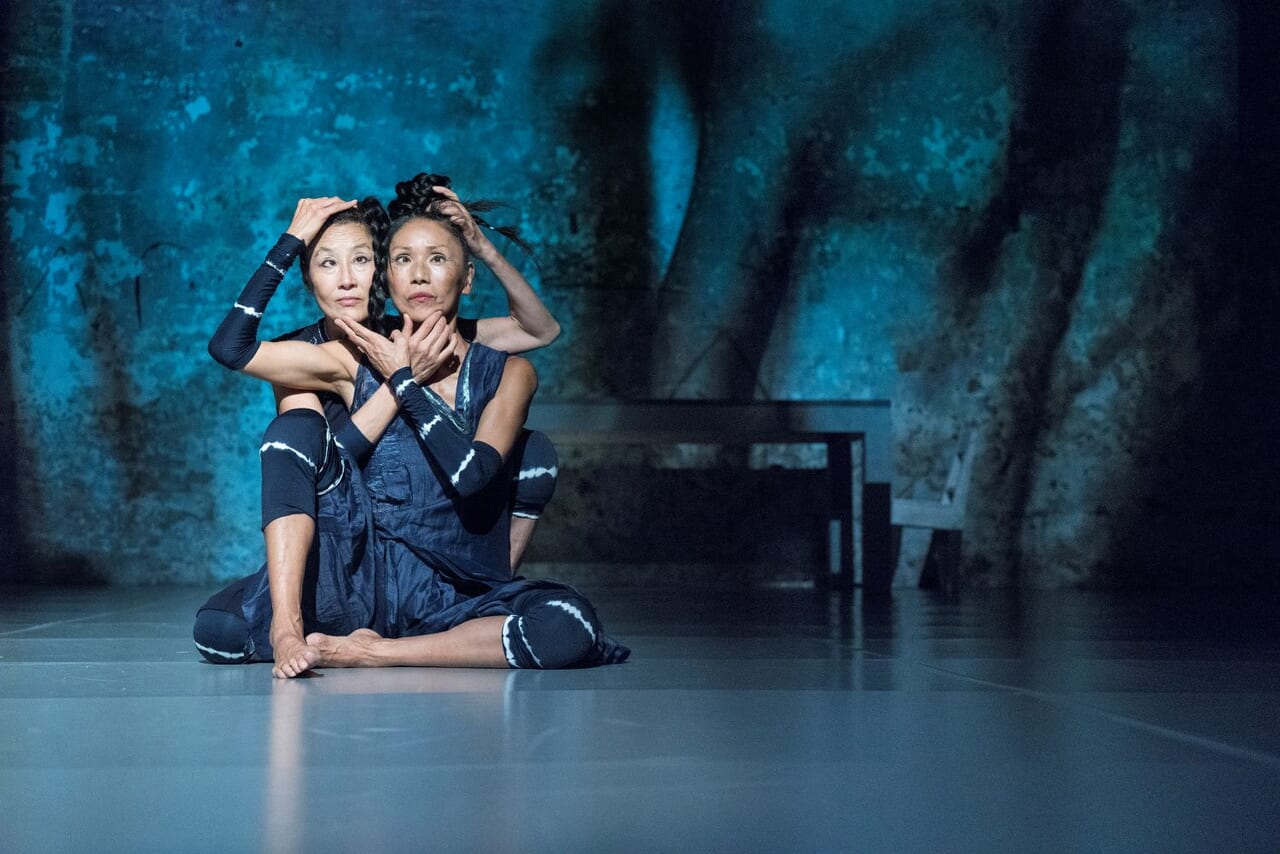
- Performer(s)
- Yumiko Yoshioka
- Director/Choreographer
- Minako Seki, Yumiko Yoshioka
- Venue
- EISFABRIK
- Year performed
- 2017
-
Tristan and Isolde
1976 was an incredibly active year for Akira Kasai, who was awarded the 8th Dance Critic’s Association of Japan Award (1976) for this work, as well as 'Tsukuyomi Hiruko', 'For the Dance of the Holy Spirit as a Personal Ritual' and 'The Future of Matter'. In addition, he was selected by Miyabi Ichikawa for the Dancer's Award of Dance Work magazine for the work he achieved that year. The poet Minoru Yoshioka, who saw all four works, spoke of his experiences in 'The Messenger - A Poem of Drawings for Akira Kasai' published in the August 1977 issue of Shingeki.
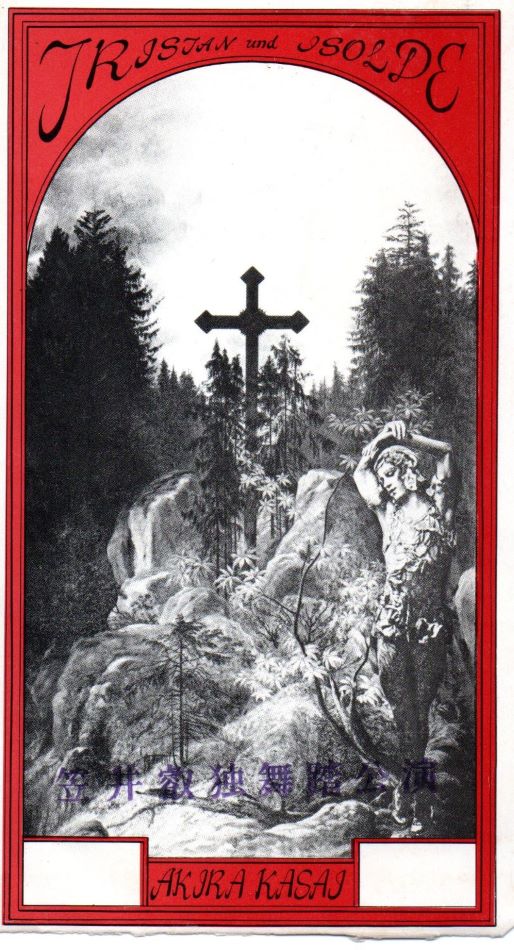
- Performer(s)
- Tenshi-Kan
- Director/Choreographer
- Akira Kasai
- Venue
- Kudan-kaikan Hall
- Year performed
- 1976
-
Tree
Comissioned by the BAM Next Wave Festival, we created a gigantic tree with silk and cotton died by tea, dry leaves, and red paint. Our program notes stated, "a tree is wounded by its own memories". We were both completely naked. Set to natural night sounds. Presented with THIRST in their second season at Brooklyn Academy of Music's Next Wave Festival (The BAM Next Wave Festival). 30 minutes. We performed this piece with THIRST at Spiral Hall in 1989, our first Tokyo performances after we left in 1976.
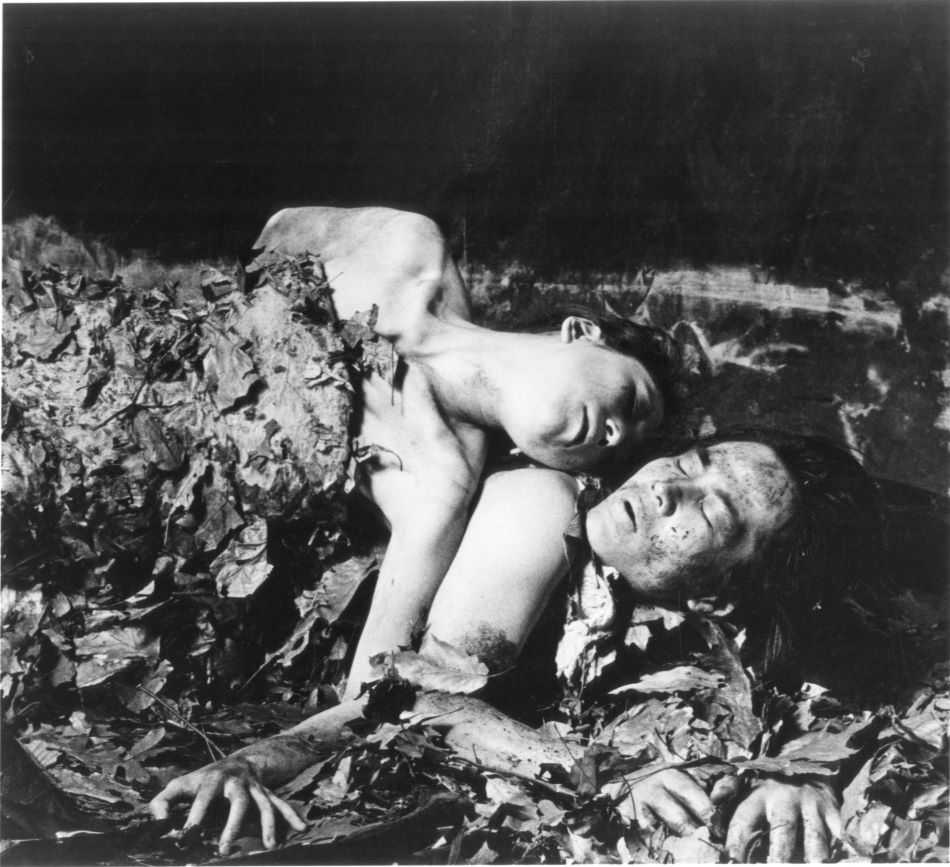
- Performer(s)
- Eiko & Koma
- Director/Choreographer
- Eiko & Koma
- Venue
- BAM Lepercq Space (NY)
- Year performed
- 1988
-
Traveler / summer [Tabibito – Viajante]
A fugaku work of spring, summer, autumn and winter based on the haiku of “Oku no hosomichi" (The Narrow Road to the Interior) by Matsuo Basho (1644-1694).
Vivid summer colors passing a dark narrow path.
Months and days are eternal travellers, the years too are voyagers.
One rice field planted, only a willow remains.
Passing through, adorned in blooming unohana flowers. (Sora)
Summer grass grows where soldiers once dreamed.
A temple shines bright through the May rain.
Fleas, lice, then horse pisses by pillow.
Silkworm farmers are as the ancient, humble. (Sora)
Collecting May rains, the Mogami River runs swift.
- Wind’s garden project 2009
- Participated in the Festival Visões Urbanas 2019
- Funded by the 4th Sao Paulo Municipal Dance Promotion Program.
- The "Wind’s garden Project", based at Casa do Vento (Wind’s House in Sao Paulo), began in 2001 with Toshi Tanaka & Ciça Ohno (Fu Bu Myo In) and continues to this day.
- "Fugaku" (art of the wind) is an original word that has been used as a generic term for performance art by Fu Bu Myo In since 2003.
![Traveler / summer [Tabibito – Viajante]](https://video.dance-archive.net/en/wp-content/uploads/2025/01/ss_tabibito2.jpg)
- Performer(s)
- Toshi Tanaka
- Director/Choreographer
- Toshi Tanaka
- Venue
- Sala Crisantempo in São Paulo
- Year performed
- 2007
-
Retsukigou 6 (The Torn Sign 6)
The piece begins with five dancers rotating in the dark, on their backs, with their feet pointed in the air. The light gradually fades up, but the movement continues. Then the dancers, standing on their shoulders, warp to form a bridge and fall to the floor. Their feet make a loud sound on the floor. They then hit the floor with their hands and feet, and form a circle repeating this phrase. In the middle of the piece, all five dancers line up in single file, marching with a stride of only a few centimetres.
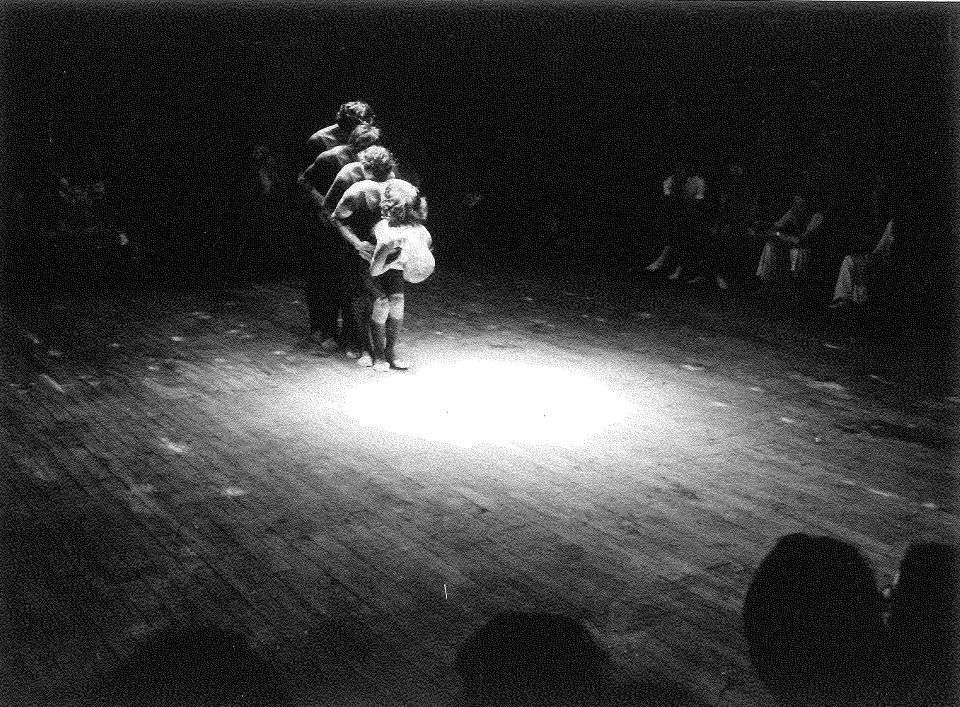
- Performer(s)
- Bonjin Atsugi
- Director/Choreographer
- Bonjin Atsugi
- Venue
- Auditorium at the Sophia University's Bldg.No.1
- Year performed
- 1979
-
Retsukigou 5 (The Torn Sign 5)
A strong line of light divides the floor in two, and five performers develop intense movements. With Atsugi in the centre, Watanabe and Tanegashima form a pair alongside Aritomi and Ebara. There is no music, and timing is measured with Atsugi's breaths. Running, embracing, slapping the abdomen, the pace of the feet, grabbing the ankles, putting together soles of the feet, rotations, floor movements etc, are all performed thoroughly and accurately. The exercise, lasting just over one hour with a break in the middle, has the performers sweating profusely and having difficulties breathing; their bodies in raw opposition to their will.
-Artist Union Symposium 1979
-Premiered on September, 1978 at the Auditorium of the Sophia University's Bldg.No.1.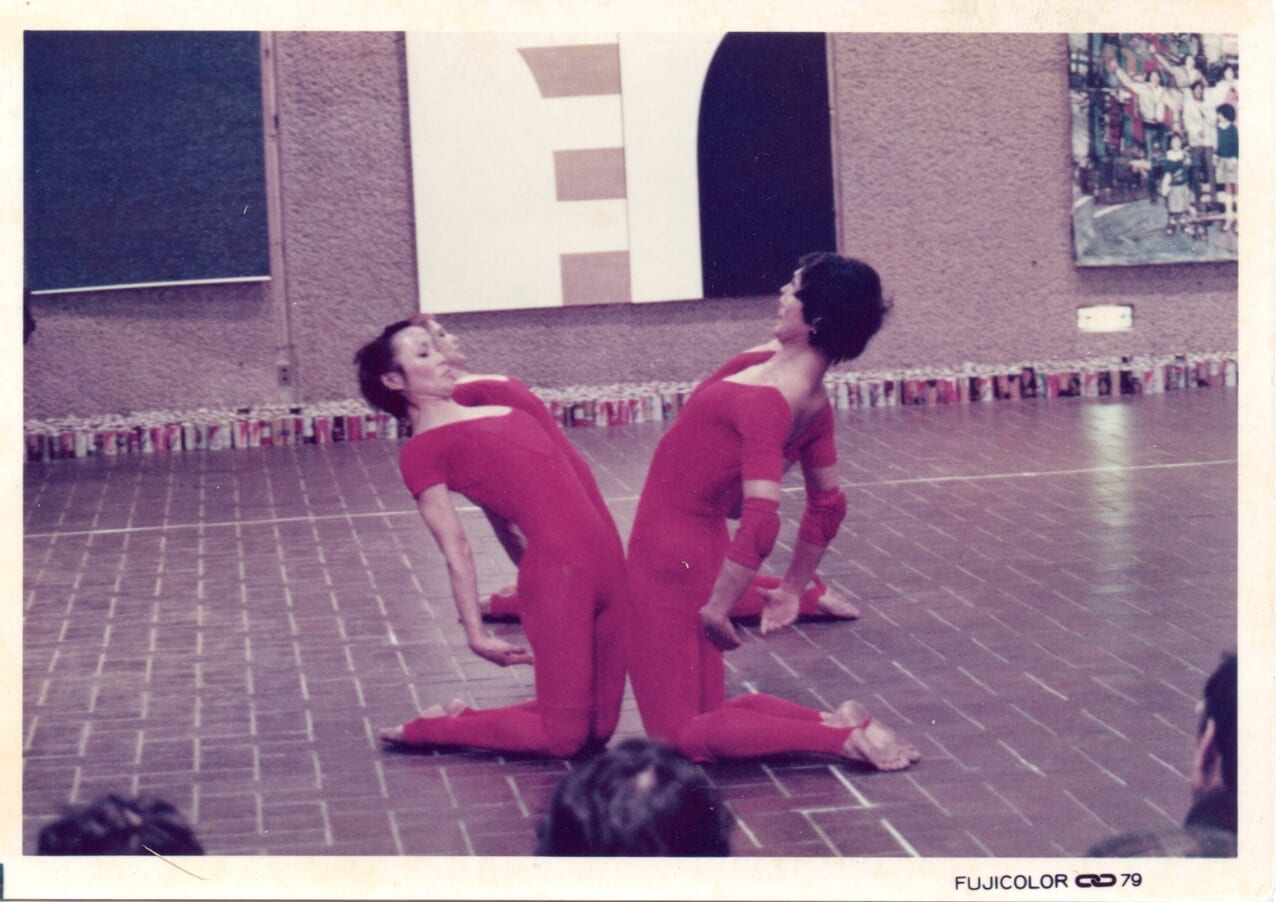
- Performer(s)
- Bonjin Atsugi
- Director/Choreographer
- Bonjin Atsugi
- Venue
- Tokyo Metropolitan Art Museum
- Year performed
- 1979
-
DISTANCE (Retsukigou 3)
Third in the 'Retsukigou' series. Three dancers each stare into a mirror they hold, performing simple actions such as walking and falling onto their backs. They turn the mirrors to objects in the studio, uttering their names and characteristics. Two go into the corridor, and the audience perceive their movements through the sound of their voice. When one returns, the other leaves. The cycle is repeated with the mirror put down, looking directly at things, and speaking from memory without looking at anything. At the end, movements are performed in relation to the space.
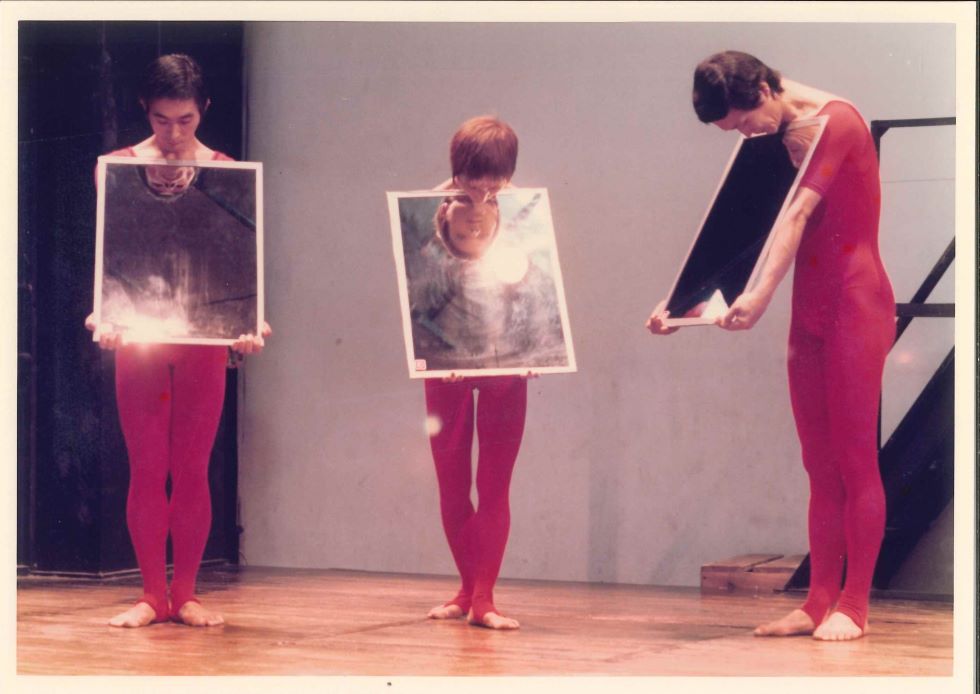
- Performer(s)
- Bonjin Atsugi
- Director/Choreographer
- Bonjin Atsugi
- Venue
- Unique Ballet Theatre
- Year performed
- 1977
-
Retsukigou 2 (The Torn Sign 2)
"The 'Retsukigou' [Torn Sign] series (1975-82) began in 1975, with 'Retsukigou 2' following the same year, continuing for the 8 years until 'Retsukigou 8' in 1982. The term 'Retsukigou' comes from the phrases 'signs are meant to be broken' and 'destined to be torn'.
'Retsukigou 2' was performed three times. First at the Unique Ballet Theatre, and later at the Théâtre des Champs-Elysées in France (where it won 3rd prize in the International Dance Festival in 1975), and at Seibu Theatre (at 'DANCE TODAY 75' organised by Atsugi Bonjin)."
- dance today '75
- Three Mention (Paris International Dance Festival, 1975)
- Premiered on July 3, 1975 at the Unique Ballet Theatre.
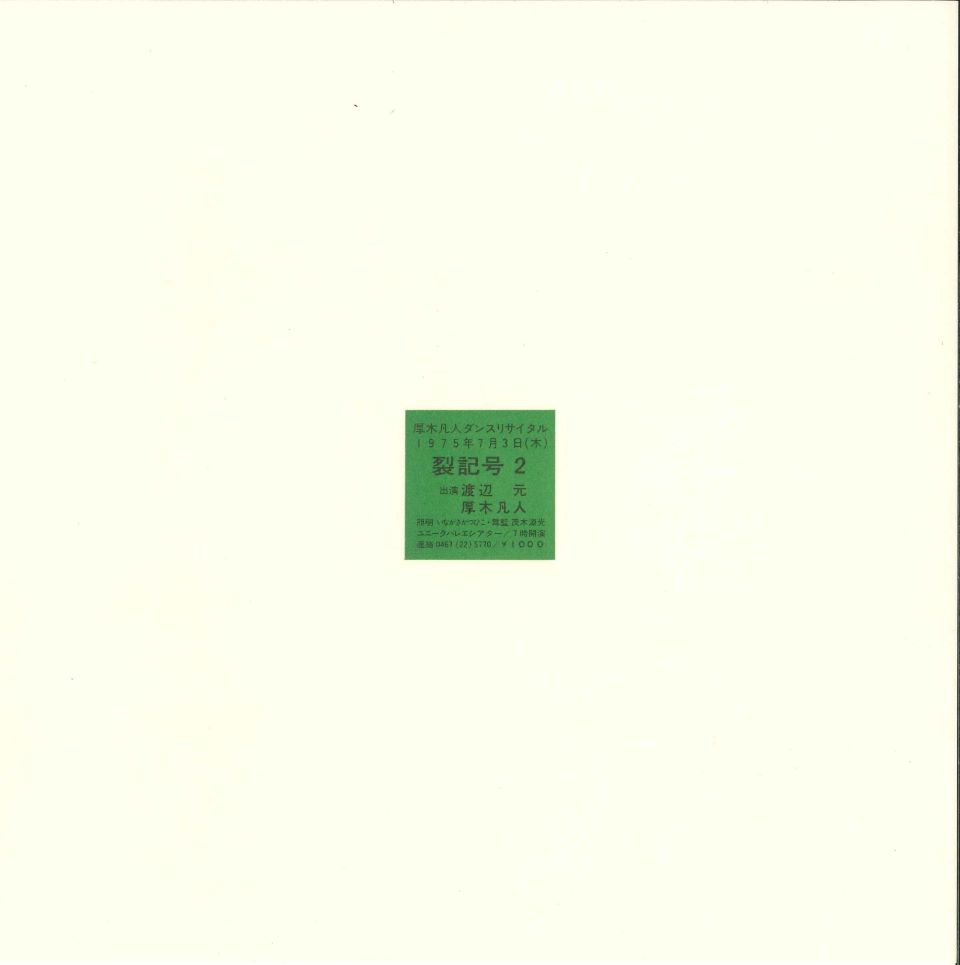
- Performer(s)
- Bonjin Atsugi
- Director/Choreographer
- Bonjin Atsugi
- Venue
- Seibu Theater
- Year performed
- 1975
-
TORIKUBI – To dance wildly in the old day
Inspired by the poem 'Torikubi' [The Bird's Head] by Yamanaka Chieko, this work contains ancient ritualistic elements. Yamada performs wearing a large headdress and adopting a limp, clearly searching for a new perspective on the body. Usually known for performing solo, in this piece she is joined by Sato Miwako and Sugiyama Keiko. Performed in a space composed of earth, water and paper, this work appears to cross the boundaries between dance, gesticulation and actions.
- Yamada Setsuko Butoh Performance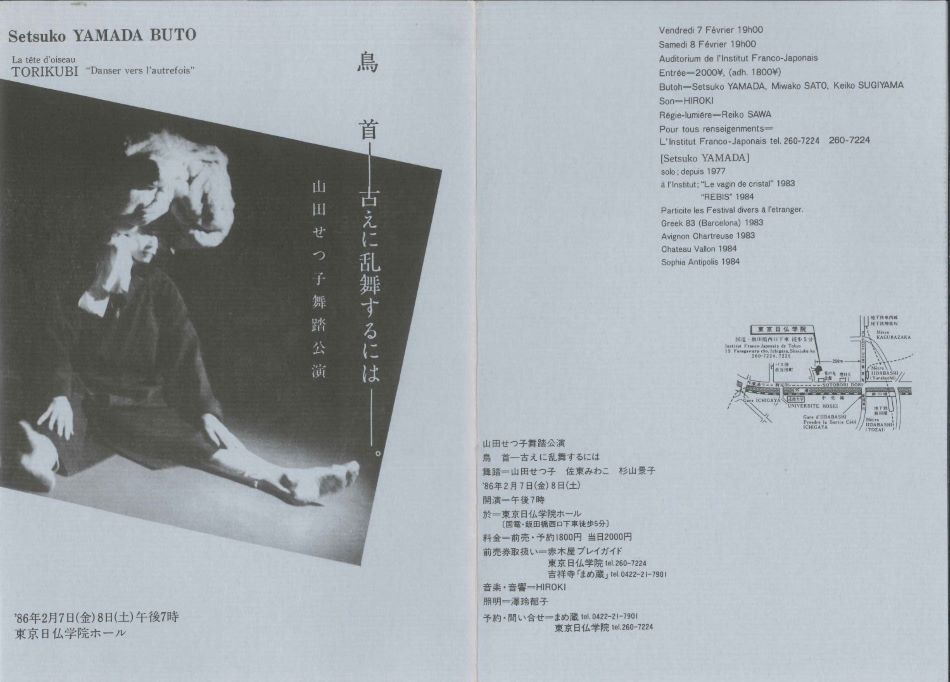
- Performer(s)
- Setsuko Yamada
- Director/Choreographer
- Setsuko Yamada
- Venue
- Institut français de Tokyo
- Year performed
- 1986
-
The Topography of the Fantasy II
The second work based on Atsushi Tanigawa's "The Topography of the Fantasy", following the first in 1998. Asking the question "Who Am I?", the piece is a journey of self-discovery in pursuit of another self. Following the back of a shadowy man, we wander through various worlds. In addition to Waguri and Katata (Shinonome Butoh), performers include young people in their twenties and the pantomime group SOUKI, who are seen here performing butoh for the first time. Using butoh-fu [butoh notation], which formed the basis of Waguri's work, the performance also addresses "transformation", one of the foundational concepts of Hijikata's butoh.
- Tokyo International Arts Festival - Agency for Cultural Affairs International Exchange/Cooperation Programme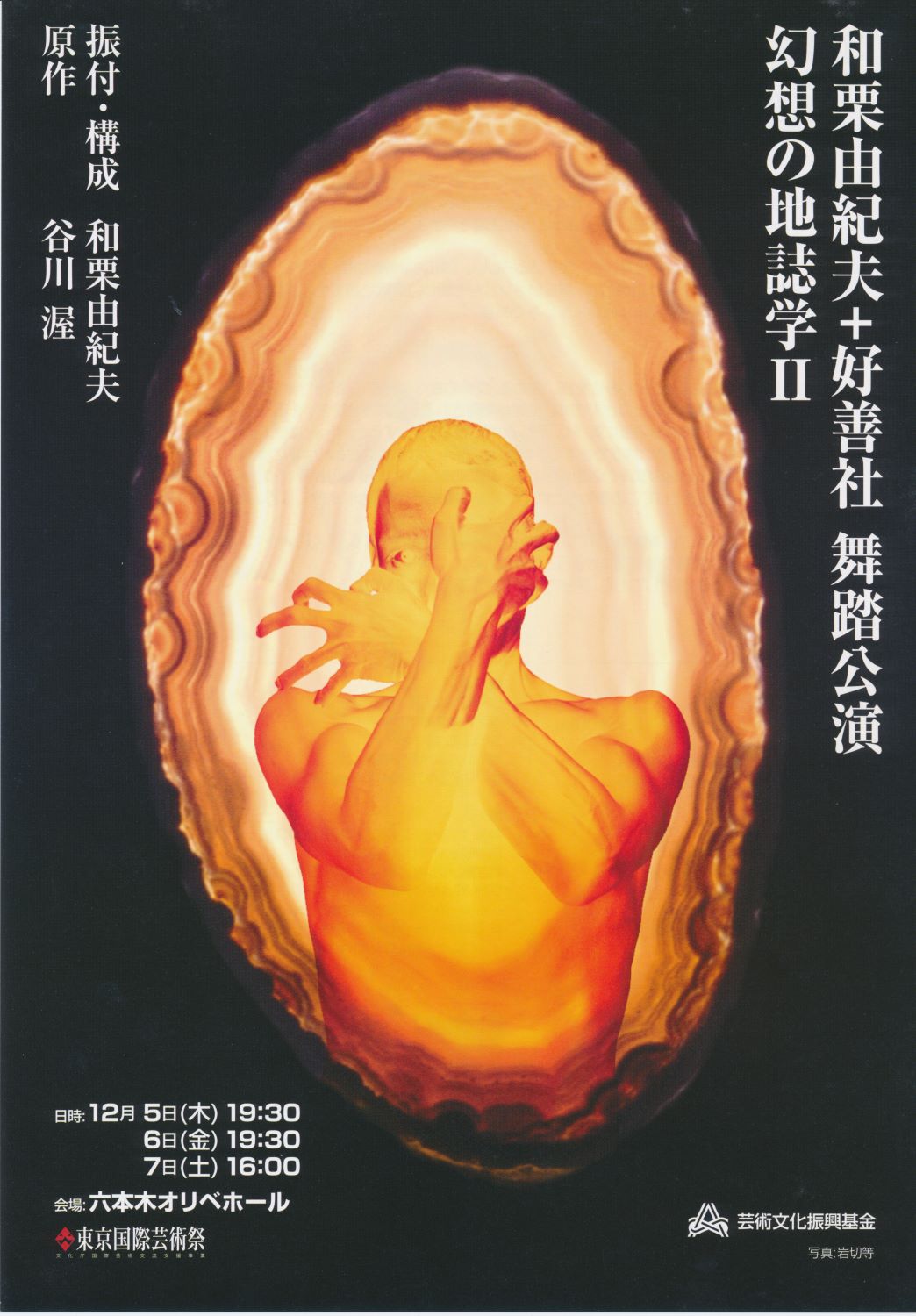
- Performer(s)
- Kozensha
- Director/Choreographer
- Yukio Waguri
- Venue
- Oribe Hall
- Year performed
- 2002
-
Tokyo DasSHOKU Girl
Tokyo DasSHOKU Girl touches on the shadowy life of Japan which many never encounter. DasSHOKU (to bleach) strips off the colour of the superficial to reveal the reality behind the happy face of consumerism, bleaching away the commonly held views of Japanese women as kawai, or cute, polite and submissive. In Tokyo DasSHOKU Girl Yumi pays homage to the roots of Butoh as an anarchic dangerous and at the same time beautiful dance form.
- Winner of the Melborne Fringe Festival Award and Green Room Award, Australia
- Performed on 7th, 8th, 9th, 14th, 15th and 16th of October, 1999 at the Melbourne Fringe Festival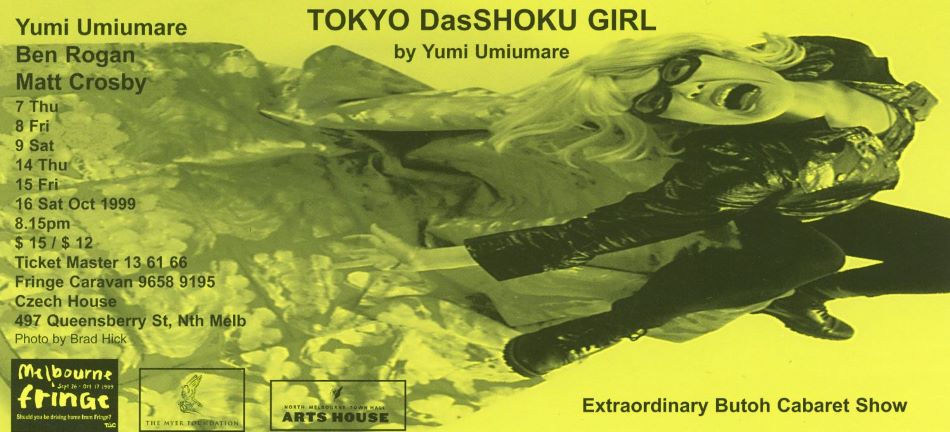
- Performer(s)
- Yumi Umiumare
- Director/Choreographer
- Yumi Umiumare
- Venue
- Czech House
- Year performed
- 1999
-
Tohoku Kabuki Project 3: Hijikata Tatasumi’s Lecture
The sound recording of the lecture by Hijikata. The 'Tohoku Kabuki Project', composed and directed by Tasumi Hijikata, included performances by Yoko Ashikawa and the Tohoku Kabuki Research Group, as well as lectures and slides, and was held four times in March, June, September and December 1985 as the 'Studio 200 Butoh Lecture'. In the first session, lectures were given by Nario Gōda and Makoto Ōoka, by Akiko Baba and Kuniichi Uno in the second, Ryōichi Enomoto and Tatsumi Hijikata in the third, and Kazuo Nagao in the fourth. Hijikata was unable to attend the fourth session due to illness and died in January in the following year.
- Tohoku Kabuki Project 3 was held on 28-30 September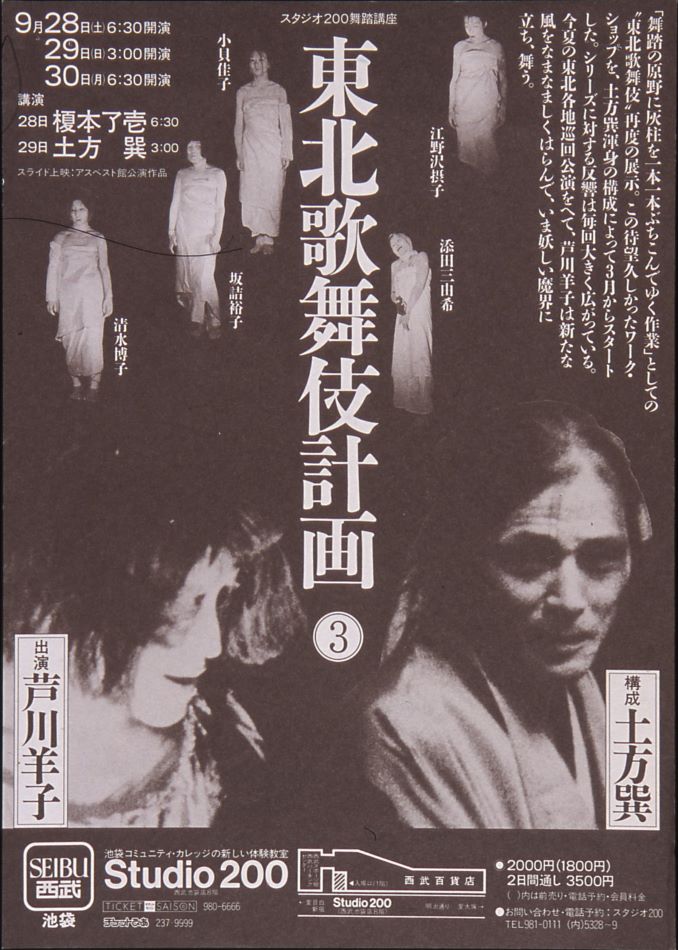
- Performer(s)
- Studio 200
- Director/Choreographer
- Tatsumi Hijikata
- Venue
- Studio 200
- Year performed
- 1985
